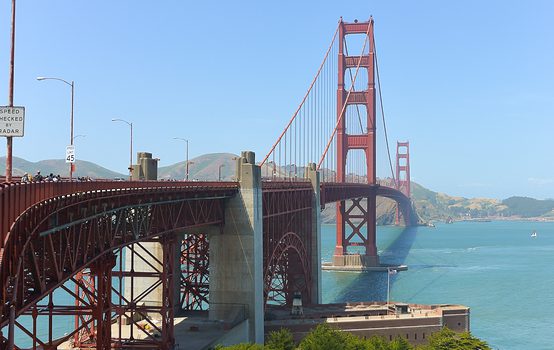Where the Middle Class Is No Longer a Majority

“Words on the Street” highlights the best writing on cities we’ve encountered in the last week. Post tips at @NewUrbs.
The Geography of Middle Class Decline | Richard Florida, CityLab
The large metros where the middle class is smallest are a combination of superstar cities, tech hubs, resource economies and poorer places. L.A. has the smallest middle class overall, followed by San Francisco, New York, and San Jose. Houston, Miami, Boston, Sacramento, New Orleans, and Hartford round out the top ten. That said, the places with the smallest middle classes are mainly smaller metros such as Monroe, Louisiana; Midland, Brownsville, McAllen, Laredo, and El Paso, Texas; Bakersfield, Fresno, Visalia, and El Centro, California; as well as college towns such as Auburn, Alabama; Champaign, Illinois; and Morgantown West Virginia.
Federal Regulators Will Let U.S. Railroads Run Faster, More Efficient Trains | Angie Schmitt, StreetsBlog
Why are American trains so expensive and yet so slow? One factor that rail advocates often point to is the Federal Railroad Administration and its rail safety regulations — rules that are finally on the verge of changing.
Antiquated regulations that date all the way back to the late 1800s (they were updated in the 1930s) compel American passenger rail operators to use trains designed like “high-velocity bank vaults,” as former Amtrak CEO David Gunn once put it. While European and Asian railcars became lighter and sleeker in recent decades without compromising safety records, FRA rules continued to insist on heavy, slow, outdated, and expensive equipment.
That finally appears set to change with the FRA’s release of new draft safety rules for traincars.
Why America’s Roads Are So Much More Dangerous Than Europe’s | Norman Garrick, Carol Atkinson-Palombo, and Hamed Ahangari, Vox
Much of the disparity seems to arise from how we build communities and the types of roads we design and construct. In the US, we drive more than any other developed country in the world, which goes some way toward explaining the higher traffic fatality rates. But even when we correct for vehicle miles traveled, we still have higher fatality rates. What we are learning is that the countries with the best traffic fatality records are different from the US in the following ways:
a) they live more compactly,
b) their road design favors more vulnerable users such as bikers and pedestrians, and
c) they have enacted laws and regulations that also favor these vulnerable road users.
Where Small Is Possible | Hank Dittmar, Brian Falk, CNU Public Square
A Pink Zone — an area where the red tape is lightened — is the locus for implementation of Lean Urbanism strategies and improvements,. The Pink Zone identifies a specific area where new protocols are pre-negotiated and experiments are conducted, all with the goal of removing impediments to economic development and community-building. It will be developed and refined in a series of pilot projects, and then released to the public. Yesterday Public Square ran an article on the first Pink Zone pilot project in Detroit.
Bright Lights, Small Government | Max Holleran, New Republic
[T]he great, unaddressed subject in Jacobs’s best-known work is gentrification. Specifically: Did her work, in part, serve as an economic and philosophical rationale for the wave of bohemian gentrification that overtook the West Village? If so, it would give new meaning to her much-lauded appreciation of street life: We would have to read Death and Life as the document of a neighborhood going through extreme economic change, with results that inevitably pushed some residents out. The West Village is one of the most expensive neighborhoods in the United States today.
Comments